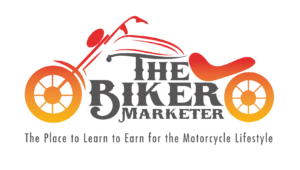Choosing the Right Affiliate Programs
Assess What Fits Your Biker Passion
So, let’s dive right in. When I first jumped into affiliate marketing, the sheer number of options was overwhelming. But here’s the thing—pick programs that resonate with your love for biking. Think about gear, accessories, or even travel kits that you genuinely believe in. If you’re passionate about a brand, it’s way easier to promote it to your fellow bikers who share that same love.
You really want to make sure that the products you choose tie into your biker lifestyle. If you’re an advocate for safety, focusing on protective gear or high-visibility jackets can amplify your credibility. Honestly, it’s a lot more fulfilling to promote things that you love than just diving into whatever pays the most commission.
And don’t forget to dive into the commissions! Some programs offer better returns than others, so it’s worth doing a little homework. Look for reviews and success stories from others in the biker community. You want programs that not only yield results but also have a solid reputation. The last thing you want is to back something sketchy, right?
Building a Strong Online Presence
Create Engaging Content
When I hit the road, I didn’t just want to ride; I wanted to share my journey. This is where content comes in. Whether it’s writing blogs, making videos, or snapping killer pics during your rides, share your experiences. Maybe you can review a new helmet or share tips on bike maintenance. Trust me, engaging content can draw in fellow bikers and build a loyal following.
Make sure your content showcases your personality! Your style will resonate with a certain crowd, and that’s perfect. Be genuine—if you think a product stinks, say it! People appreciate authenticity, and they’ll trust your recommendations more. Plus, you’ll encourage discussions, which can help grow your audience.
Also, don’t sleep on SEO! Optimize your content so folks can find you while they’re searching for the latest biker gear or tips. Use keywords relevant to your niche, such as “biker accessories”, “touring gear”, or “motorcycle safety tips” to help drive traffic to your site. It’s about getting your voice out there where people can find it after all.
Engaging with the Biker Community
Build Relationships with Fellow Riders
Connecting with fellow bikers has been one of the highlights of my affiliate journey. Attend local biker meet-ups or events, and don’t hesitate to talk about your online presence. I’ve had many conversations that led to friendships and even collaborations. It’s all about connections, right? Being part of a community opens doors to new audiences.
Social media is a powerful tool here. Join biking groups or forums and contribute value without being pushy about sales. Share experiences, and occasionally plug your affiliate products naturally. People tend to trust referrals from fellow bikers more than overt advertisements.
Also, don’t forget to collaborate with other bikers who might have their own platforms. You can do joint promotions or guest blogging! This cross-promotion can help both parties reach new audiences and gain even more traction in the biker niche.
Promoting Your Affiliate Links Effectively
Utilize Multiple Platforms
Once you have chosen your affiliate programs, created content, and connected with the community, it’s time to get those affiliate links out there! I can’t stress enough how important it is to spread the word across multiple platforms. Think social media, blogs, YouTube—wherever you can get your voice out, do it! Each platform has its own vibe, so tailor your messages accordingly.

On Instagram, visuals are king. Showcase your rides with bikes you promote in the photos, and include the link in your bio. On platforms like YouTube, video reviews can help potential buyers see products in action. Plus, using calls to action in your videos and descriptions leads your viewers straight to your affiliate links.
Don’t forget email! If you’re collecting emails from your followers, this is a gold mine for suggesting products. I often send out weekly newsletters that highlight new gear, upcoming events, or travel tips while sneakily adding affiliate links where relevant. It keeps your audience in the loop while optimizing your monetization efforts!
Tracking Your Success and Making Adjustments
Analyze What’s Working
After you’ve put in the work, it’s time to track your efforts. I like to keep an eye on which products are selling well versus the ones that aren’t getting any traction at all. Use tracking tools provided by your affiliate programs, Google Analytics, or even simple spreadsheets. It’ll help to see which content generates clicks and conversions.
If something isn’t performing well, don’t just shrug it off. Dive in and figure out why. It might be the product, or maybe the way it’s presented. Sometimes simply rephrasing your message or switching the platform can yield better results. Tune in to your audience’s feedback and adjust your strategy accordingly.
Remember that affiliate marketing isn’t a “set it and forget it” game. Continuous learning and adapting to new trends, products, and audience behaviors will keep things fresh and engaging. Grow with your community and keep on riding that road to success!
FAQs
What are the basics of affiliate marketing for bikers?
Affiliate marketing for bikers involves promoting products related to biking, such as gear or accessories, and earning a commission for sales made through your referral links. It’s important to choose programs that resonate with your passion and create engaging content to attract an audience.
How do I build an online presence for affiliate marketing?
Building an online presence requires you to create engaging content that reflects your personality and biking experience. Utilize blogs, social media platforms, or videos to connect with fellow bikers and share valuable insights.
How can I effectively promote my affiliate links?
Promote your affiliate links across multiple platforms, including social media, your blog, and email newsletters. Tailor your messaging to suit each platform, showcasing the products in an authentic way that resonates with your audience.
What should I do if my affiliate products aren’t selling?
If you notice that certain products aren’t performing well, revisit your promotional strategy. Analyze what might be going wrong—whether it’s the presentation, the choice of products, or the promotion method—and make adjustments based on audience feedback.
How do I track the success of my affiliate marketing efforts?
Tracking success can be done using analytics tools provided by affiliate programs, Google Analytics, or simple spreadsheets to monitor clicks and conversions. Understanding what works and what doesn’t is key for making informed adjustments to your strategy.


